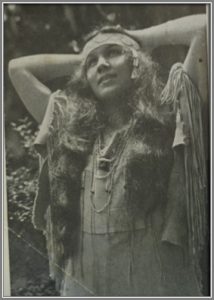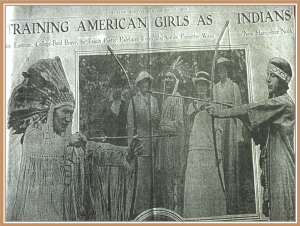This capstone project investigates the intersection of Native American acculturation, gender and identity in early 20thcentury girl’s summer camps. I began my research in the Sophia Smith Collection in the Eastman Goodale Dayton Collection as I have an interest in Native American Studies.

Charles Eastman was a Santee Sioux, a noted author and intellectual. Along with his wife Elaine, both collaborated on a wide body of work/activism including operating a summer camp in NH. Locating this fascinating photo of the Eastman’s daughter led me to a closer examination of the US summer camp phenomenon in the early 20thcentury. Immediately, summer camps bring to mind the outdoors, tents, swimming, campfires and most importantly, developing life-long friendships. In other words, camps are memorable fun.

 Such a simple wholesome idea a camp is, one would think. However, further examination of this subject uncovered a complicated history. in the camping industry was the wholesale acculturation of Native American mores which revealed the camping industry, for the most part, reinforced national gender and racial hierarchies.
Such a simple wholesome idea a camp is, one would think. However, further examination of this subject uncovered a complicated history. in the camping industry was the wholesale acculturation of Native American mores which revealed the camping industry, for the most part, reinforced national gender and racial hierarchies.